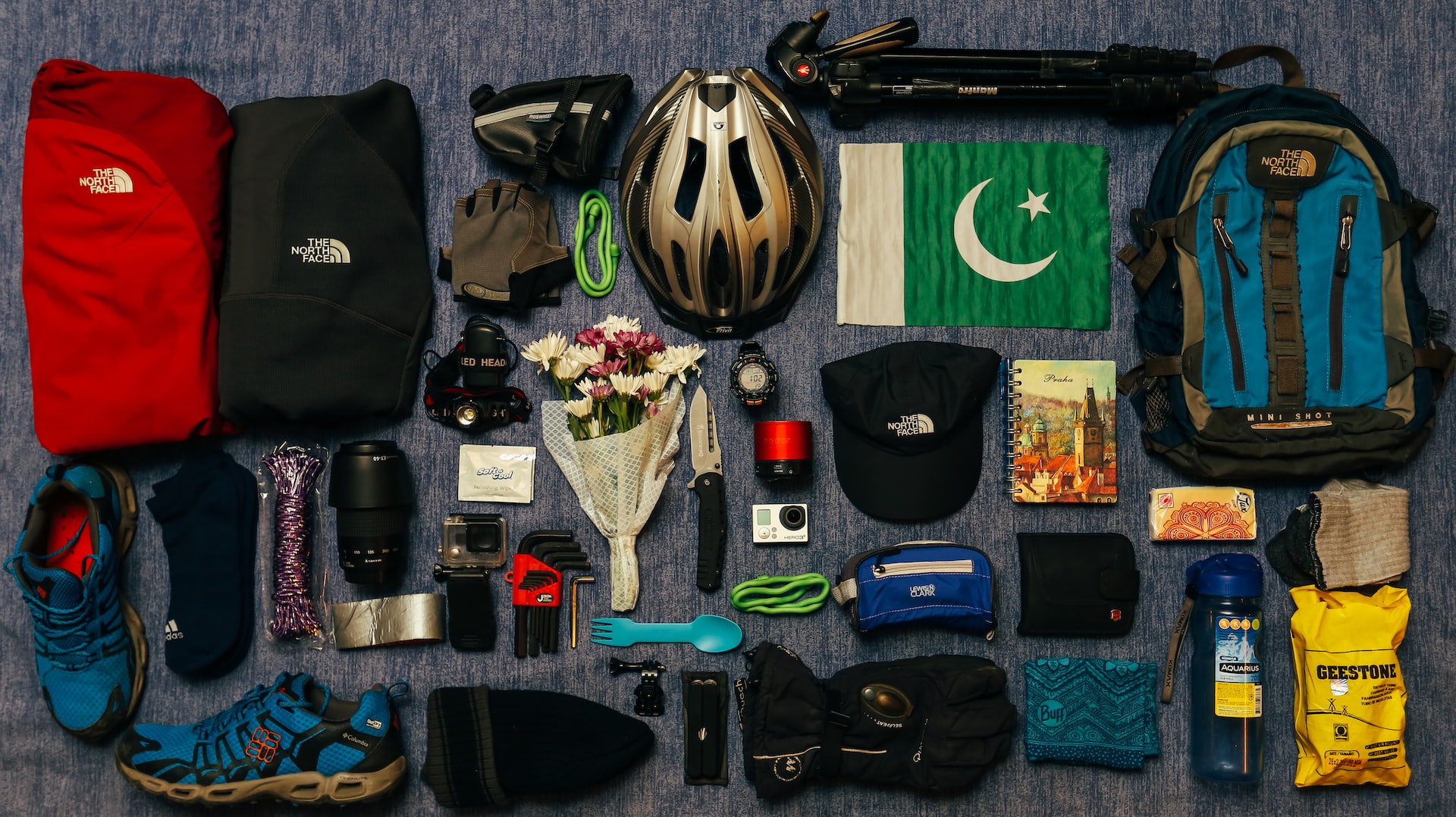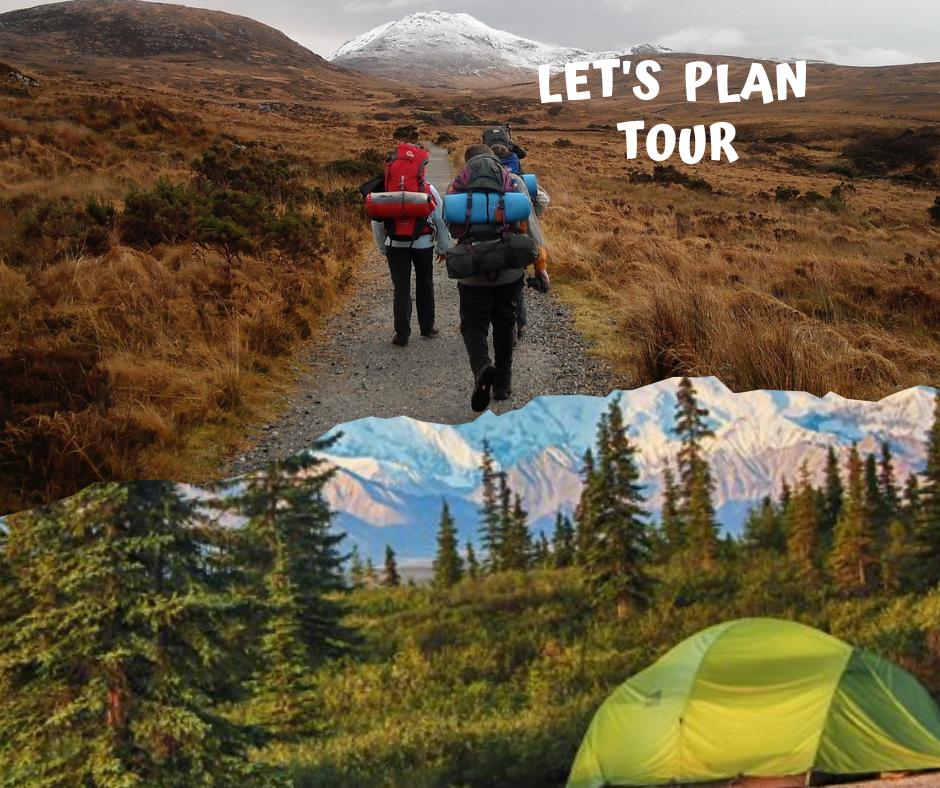Best trekking equipment for travellers? The best trekking equipment for travellers will depend on the type of trek you are embarking on, the climate and terrain of your destination, and your personal preferences. However, here are some general suggestions for essential trekking equipment:
Good-quality hiking boots:
Good-quality hiking boots are an essential piece of equipment for any trekker or hiker. Hiking boots should fit snugly but comfortably, with no rubbing or pinching. Make sure to try on boots with the socks you plan to wear while hiking. Look for boots with good ankle support to prevent injuries on uneven terrain. Hiking boots should be made from high-quality materials that can withstand rough terrain and harsh weather conditions. The soles of hiking boots should provide good traction on a variety of surfaces, including rocks, mud, and snow.
Look for boots made from breathable materials to prevent your feet from getting too hot and sweaty during long hikes. If you plan to hike in wet conditions, consider boots that are waterproof or water-resistant to keep your feet dry. Best trekking equipment for travellers?
While heavier boots may offer more support and durability, they can also be more tiring to wear over long distances. Choose a boot weight that is comfortable for your needs.
Make sure the boots have adequate padding and cushioning to keep your feet comfortable, even on long hikes. popular brands of hiking boots include Salomon, Merrell, Keen, Vasque, and Lowa.
Backpack:
A trek backpack is an essential piece of equipment for any trekker or hiker, as it allows you to carry all your gear, water, and snacks comfortably on your back. Here are some things to look for when choosing a trek backpack:
Choose a backpack that is the appropriate size for the length of your trek and the amount of gear you need to carry. Generally, backpacks in the range of 40-60 liters are suitable for multi-day treks. Make sure the backpack fits your body comfortably and does not rub or chafe. Look for backpacks with adjustable shoulder straps, a padded back panel, and a hip belt for support.
Choose a backpack made from high-quality materials that can withstand rough terrain and harsh weather conditions. Look for a backpack with multiple compartments, including a main compartment for your gear, side pockets for water bottles and snacks, and a front pocket for easy access to smaller items.
Look for backpacks with straps and loops for attaching trekking poles, ice axes, and other gear to the outside of the pack. Some backpacks have ventilation systems that allow air to circulate between your back and the pack, which can help prevent overheating and sweating.
If you plan to hike in wet conditions, consider a backpack that is waterproof or water-resistant to keep your gear dry. popular brands of trek backpacks include Osprey, Deuter, Gregory, and The North Face.
Clothing:
Choosing the right clothing for trekking is important to ensure comfort, protection, and mobility while hiking. Here are some things to consider when choosing clothing for a trek Look for lightweight, moisture-wicking, and quick-drying fabrics such as polyester, nylon, or merino wool that can keep you dry and comfortable during your hike.
Dressing in layers allows you to adjust your body temperature as needed, depending on the weather conditions. Start with a moisture-wicking base layer, add an insulating mid-layer, and finish with a waterproof and breathable outer layer.
Choose clothing that is comfortable and allows you to move freely, without restricting your movement. Avoid clothing with chafing seams or tight-fitting clothing that may cause discomfort.
Consider clothing that offers protection from the sun’s harmful rays and insects. Sunscreen, hats, and long-sleeved shirts can help protect your skin, while insect repellent can keep bugs at bay.
Good-quality hiking boots are essential for trekking. Look for boots with good ankle support and sturdy soles that can provide good traction on uneven terrain.
Choose socks made from moisture-wicking materials that can keep your feet dry and prevent blisters.
Don’t forget to bring a warm hat, gloves, and a scarf for colder weather. Sunglasses and a buff can also be helpful to protect your eyes and face from the sun and wind. Popular trekking clothing brands include Patagonia, The North Face, Columbia, REI Co-op, and Outdoor Research.
Water bottle or hydration system:
Carrying enough water is essential when trekking or hiking. There are two main options for carrying water – a water bottle or a hydration system.
Water bottles are a simple and lightweight option. Look for bottles made from durable materials like stainless steel or BPA-free plastic. Some features to look for in a water bottle include a wide mouth for easy filling and cleaning, a secure cap that won’t leak, and an attached carabiner for easy attachment to your backpack.
A hydration system, also known as a hydration bladder, is a reservoir that fits inside your backpack and allows you to drink water through a tube that runs from the bladder to your mouth. Some benefits of hydration systems include:
Hydration systems allow you to drink water without having to stop and remove your backpack. Hydration systems typically hold more water than a single water bottle, which can be beneficial for longer treks.
Carrying water in a hydration system can help distribute the weight evenly across your back, which can be more comfortable for some people.
When choosing a hydration system, look for a reservoir with a capacity that meets your needs and a durable, leak-proof design. Make sure the tube is long enough to reach your mouth comfortably, and look for a bite valve that is easy to use and doesn’t leak.
The choice between a water bottle or hydration system will depend on personal preference and the specific needs of your trek. It’s always a good idea to bring some extra water in case of emergencies, and to plan your route around water sources if possible.
Navigation tools:
Navigation tools are crucial for any trekker or hiker to ensure that they stay on the right path and reach their destination safely. Here are some navigation tools to consider bringing on your trek:
Map: Bring a detailed map of the area you will be trekking in, with marked trails and landmarks. Make sure the map is up-to-date and in good condition.
Compass: A compass is a basic navigation tool that can help you orient yourself and determine your direction of travel. Learn how to use a compass properly before your trek.
GPS device: A handheld GPS device can provide you with accurate location information, track your progress, and help you navigate in areas with limited visibility or poor signage. Make sure to bring extra batteries or a power bank to keep your GPS device charged.
Smartphone: Your smartphone can be a useful tool for navigation, with GPS capabilities and mapping apps such as Google Maps, All Trails, or Gaia GPS. However, keep in mind that cell service may be limited in remote areas, and your phone’s battery may drain quickly.
Watch: A watch with a built-in compass or GPS can be a useful tool for navigation, especially if you prefer not to rely on your smartphone or carry extra devices.
Whistle: A whistle can be a useful signalling tool in case of an emergency, and can help rescuers locate you if you are lost.
Make sure you know how to use your navigation tools before setting out on your trek, and bring extra batteries or a power bank if needed. Remember to always follow marked trails and stay aware of your surroundings to avoid getting lost or disoriented.
Headlamp or flashlight:
A headlamp or flashlight is an essential tool for any trekker or hiker, especially if you plan on hiking during early morning or late afternoon hours, or in areas with limited visibility. Here are some factors to consider when choosing between a headlamp or flashlight:
Hands-free use: A headlamp allows for hands-free use, which can be helpful for tasks such as setting up camp or preparing meals in low light conditions. With a headlamp, you can keep both hands free to work with.
Directional light: A headlamp allows you to aim the light in the direction you are looking, which can be useful for navigating rocky or uneven terrain.
Power source: Most headlamps and flashlights use batteries as a power source, so consider bringing extra batteries or a power bank if you plan on using them for an extended period of time.
Weight: A headlamp is typically lighter and more compact than a flashlight, making it easier to carry in your backpack.
Light output: Headlamps and flashlights come in different brightness levels, measured in lumens. Consider the brightness you need based on the activities you plan on doing, and the duration of your trek.Best trekking equipment for travellers
The choice between a headlamp or flashlight comes down to personal preference and the specific needs of your trek. If you need hands-free use, directional light, and a lighter weight option, a headlamp may be the best choice.Best trekking equipment for travellers
First aid kit:
A well-stocked first aid kit is an essential item for any trekker or hiker, as it can help you deal with minor injuries or illnesses that may occur during your trek. Here are some items to include in your first aid kit:
- Adhesive bandages (various sizes): These can be used to cover small cuts or blisters.
- Sterile gauze pads: These can be used to cover larger wounds or abrasions.
- Medical tape: This can be used to secure bandages or gauze pads.
- Antiseptic wipes: These can be used to clean wounds and help prevent infection.
- Pain relievers: Ibuprofen or acetaminophen can be used to relieve pain and reduce inflammation.
- Sunscreen: Choose a sunscreen with a high SPF to protect your skin from harmful UV rays.
- Insect repellent: This can help prevent insect bites and reduce the risk of tick-borne illnesses.
Make sure to pack your first aid kit in a waterproof bag or container, and keep it easily accessible in your backpack. It’s also a good idea to familiarize yourself with the items in your first aid kit and how to use them before your trek.
Portable charger:
A portable charger, also known as a power bank, is a useful item to bring on a trek as it allows you to recharge your electronic devices such as smartphones, GPS devices, or cameras, while on the go. Here are some factors to consider when choosing a portable charger for your trek:
Capacity: The capacity of a portable charger is measured in milliampere-hour (mAh) and determines how much charge it can hold. Consider the capacity of your electronic devices and the duration of your trek to choose a power bank with enough capacity to meet your needs.
Weight and size: A portable charger add weight to your backpack, so consider the weight and size of the power bank when choosing one. Look for lightweight and compact options that won’t take up too much space in your backpack.
Charging speed: Check the charging speed of the portable charger to ensure that it charges your devices quickly.
Number of ports: Look for a power bank with multiple ports so that you can charge multiple devices at once.
Durability: Choose a power bank that is durable and resistant to dust, water, and shocks, as it may be exposed to rough terrain during your trek.
Brand and warranty: Choose a reputable brand with a good warranty that can guarantee the quality and reliability of the power bank.
A portable charger can be a useful item for any trekker or hiker who relies on electronic devices. Choose a power bank with enough capacity, a lightweight and compact design, fast charging speed, multiple ports, durability, and a good warranty. Best trekking equipment for travellers?



